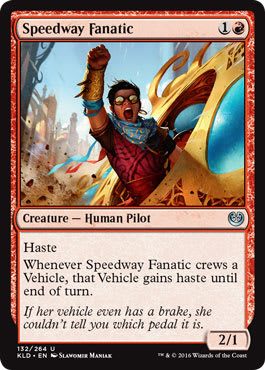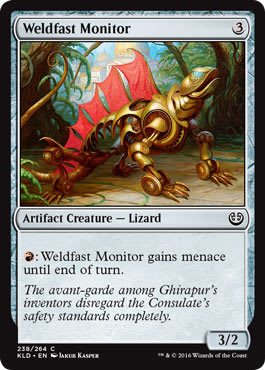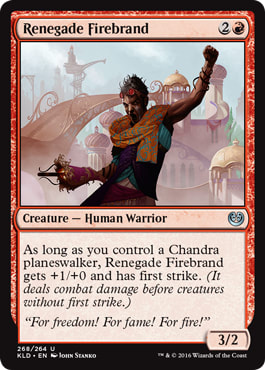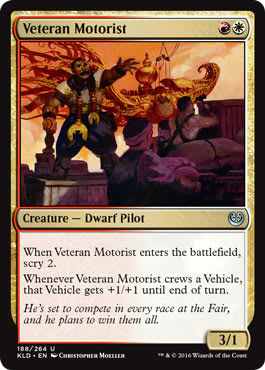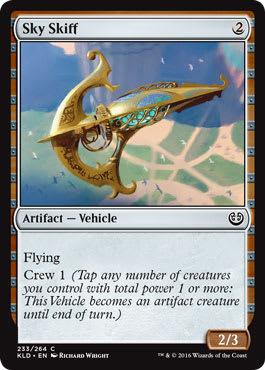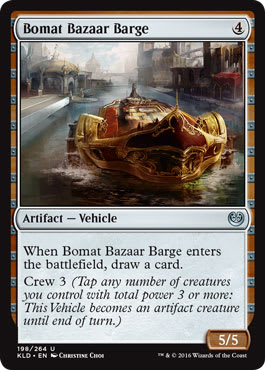Now that we’ve had a couple of weeks to kick the tires, how are we feeling about those Planeswalker Decks?
Clearly, they’re a hot topic of conversation on Magic sites and social media. Two weeks ago, here on Gathering Magic, I dove into how they’d pleasantly surprised me, since my primary worry was that they’d fall short of the “museum piece” criteria I have for good Preconstructed decks.
Last week, we posted a rebuttal to the negative review put up by Tolarian Community College, claiming that many of the design “bugs” The Professor had identified were, in fact, design features — just for a different audience. Given the debate around the Planeswalker Decks right now, it was in some ways perhaps not surprising that Wizards of the Coast included that piece in their daily roundup on the mothership last week (a real honor!).
But here we are on Week Three of the Planeswalker Deck coverage in this column. “Jay, we get it, Planeswalker Decks matter and they have their part to play. But . . . what can we do with them?”
Fair enough! Let’s pop the hood and get to work — it’s time for Ertai’s Meddling: Planeswalker Decks Edition!
For those who might be joining us for the first time, Ertai’s Lament is a regular feature I do here on Gathering Magic where we take a Preconstructed deck, strip it down to its core essence, and rebuild it better and stronger than before. Along the way, we follow two “golden rules.”
Rule One: We can add as many uncommons or commons as we’d like — but no added rares or mythics. There are two reasons for this rule. First, we like to keep the deck affordable for folks who might want to build something like it at home. The object isn’t to 4-0 your FNM so much as build a well-supported deck around an existing theme — though a time or two in the past we’ve heard our brews have performed well as a rogue build.
Second, if we’re able to add unlimited rares and mythics, there’s a lot less need to support the deck’s theme. Slam in some Planeswalkers, some Smuggler's Copters, some top-shelf spells and when it’s all said and done, there’s not necessarily a lot of room left for the theme of the original deck.
With our rules in place, let’s begin with a look at the stock deck.
Chandra, Pyrogenius Planeswalker Deck ? Planeswalker Deck| Wizards of the Coast
- Creatures (17)
- 1 Brazen Scourge
- 1 Gearshift Ace
- 1 Skyswirl Harrier
- 1 Snare Thopter
- 1 Speedway Fanatic
- 1 Weldfast Monitor
- 2 Aerial Responder
- 2 Spireside Infiltrator
- 2 Trusty Companion
- 2 Veteran Motorist
- 3 Renegade Firebrand
- Planeswalkers (1)
- 1 Chandra, Pyrogenius
- Spells (17)
- 1 Fateful Showdown
- 2 Built to Last
- 4 Flame Lash
- 1 Cathartic Reunion
- 2 Liberating Combustion
- 1 Bomat Bazaar Barge
- 1 Fleetwheel Cruiser
- 1 Ovalchase Dragster
- 2 Renegade Freighter
- 2 Sky Skiff
- Lands (25)
- 10 Plains
- 11 Mountain
- 4 Stone Quarry
Now, what are the themes of the deck? In this case, there are two separate themes worth considering. The first theme is the Kaladesh mechanic of Vehicles, and the cards that love them. We’re certainly going to want to put these front and center, and there’s plenty of support at all levels of rarity for it. Indeed, we could easily make our full 60 around that — but it would mean discounting the reason many folks are buying these in the first place: Chandra.
Although represented by a much smaller proportion of cards, Chandra and her cohort of enablers are a key subtheme we won’t want to discard. That includes Chandra, Pyrogenius herself, as well as the Renegade Firebrands and Liberating Combustions. Despite having a small footprint, they’ll bring a lot to the battlefield while being lots of fun to play. What makes this theme easy to support is that there really isn’t much out there that we can add for it. As themes go, it’s pretty self-contained, since these are all new cards designed to support the featured Planeswalker.
It’s not without a note of irony that we get into the first round of cuts on the deck. After all, here is where we look to jettison card diversity — the principle I lauded the decks for having last week — in order to make room for a much more concentrated brew. But therein lies the difference in experience — high card diversity is great for showcasing a lot of cards and having a widely varying play experience each game, but what we want now is a tightly-tuned theme deck. That means lots of playsets of key cards — and a whole lot of fat trimmed out.
We’ll start with the poor Speedway Fanatic. He’s not a terrible card, with a 2/1 for two-mana in Red being a fairly standard offering for much of Magic’s history (see: Goblin Piker). The Fanatic, being a Pilot, not only has haste himself, but transfers that to any Vehicle he’s behind the wheel of. It’s not a bad card, but the problem is it’s not enough of a boost to justify taking up four slots in the deck. The low toughness means he doesn’t stand up to much abuse, so he’ll be largely devoted to just crewing Vehicles. And drawn late, when the bulk of your fleet is already deployed, he adds next to nothing. We’d like to see our drivers bring a little more to the table.
Next up is the Trusty Companion. The Companion has nice stats and a decent ability, and can even pull off the feat of attacking and crewing a vehicle on defense. Like the Fanatic, though, it just doesn’t bring enough to the table. Compare it to the Veteran Motorist, a card we’ll be keeping. Sure the Motorist is a bit fragile, but the ability to pump the stats of anything it crews while even improving your card draw is a package well worth 2 mana.
Next for the bread lines is the Weldfast Monitor. The stock deck is curiously dense with 3/2 creatures, and the only thing this fellow offers is an activateable menace. For 3 mana, that’s an exercise in mediocrity, and the Monitor occupies a space better used elsewhere. In addition, it can give a ride to the Brazen Scourge. The Scourge, a 3/3 with haste for 3 mana, is not an easy cut to make, as that’s a lot of punch for the cost. Sometimes you just have to make the difficult cuts, because an otherwise solid card just doesn’t offer enough to warrant inclusion. The Monitor was easy, but we’ll miss the Gremlin.
Finally, the deck’s top-of-curve creatures, the Snare Thopter and Skyswirl Harrier, are easy cuts. While we do want a position in the sky, we’ll have a lot better ways to accomplish it than these two.
Calling the Pit Crew
So with all those cuts, where do we want to build up our deck’s creature component? As mentioned above, we certainly want to keep the Chandra-centered theme going, here represented by the Renegade Firebrands. These are a little bit weak for 3 mana on their own, though they’ll be just as useful piloting our Vehicles while waiting for Chandra to arrive. Once she does, they’re a superb value, a 4/2 first striker. We’ll be taking four of them.
Since we’re building around Vehicles, we certainly want to have some Pilots on the track. The aforementioned Veteran Motorist is an easy grab, giving us some nice deck filtering while boosting the Vehicle he’s piloting. For another two-drop, we’ll also take a set of Gearshift Aces. These Pilots don’t add to the stats of the Vehicle, but they do give it the very useful first strike ability. Unlike the Speedway Fanatics, these are useful at any point in the game, and get the nod.
One problem with the Vehicles mechanic is that it requires the dedication of a creature to the cause. Our next addition is the Spireside Infiltrator. It may not be a pilot but it nevertheless makes for a very useful member of the crew since it pings your opponent each time it’s tapped. It’s not a lot of damage on its own, but every little adds up.
Finally, we’ll have a place for a couple Aerial Responders. These well-rounded Dwarves have drawn favorable comparisons to Zendikar’s Vampire Nighthawk, being a three-mana 2/3 loaded with abilities. The evasion in the form of flying is very useful, as is the ability to play a two-way game in the red zone and some bonus lifegain. We’ll only want a pair of them, but they should be a bit of a nuisance for your opponent when they touch down.
A Fleet Swift and Terrible
The stock Planeswalker Deck carried with it seven Vehicle cards, in addition to its seventeen creatures. We want to go a little deeper here on Vehicles, since we’ve tuned our creature complement so closely to synergize with them. We’ll naturally be keeping the single copy of Fleetwheel Cruiser, one of the deck’s rares. The Cruiser is nice because it doesn’t need a pilot the turn it enters the battlefield, so you can play it as an ambush attacker with its haste even on an empty board.
Next up is the Sky Skiff, cheap and small but with 2 points of power in the air. Any of the deck’s creatures can crew it, and it has fairly solid durability. It’s not flashy, but it fills a role of an early source of hard-to-block damage.
We’ll also be rounding out the Renegade Freighters to a full set. A 4/3 that attacks as a 5/4, this gets bigger than a Craw Wurm if you have the Veteran Motorist at the helm. Not bad for 3 mana, and like the Skiff any of your creatures is up to the task.
Finally, we’ll take a pair of the Bomat Bazaar Barges. These are a sturdy 5/5 beater that replace themselves in your hand when played. That’s terrific upside, but we don’t want to go too deep on them because not all of your creatures have the ability to crew it on their own. Sure you can tap a second creature to get things moving, but that much dedication to get one attacker in motion seems wasteful.
Moving on from the races, we’ll naturally be keeping Chandra, Pyrogenius in. She doesn’t bring a lot of synergy to the table herself, but she does things — damaging your opponent, burning creatures — you’d want to see regardless. Liberating Combustion is a pricey bit of removal that at least tutors up your Planeswalker card if you still haven’t drawn her. We’ll also want the deck’s final rare, Fateful Showdown. It’s not wonderful, but rares can be splashy and fun — we seldom cut them.
That doesn’t leave much room for anything else, but we’ll add in a little extra removal with Welding Sparks. Since we’re going heavy on artifacts, it won’t be too hard to wring some extra damage out of this card, and we like to have ways to keep the red zone clear of obstacles or snipe your opponent’s utility creatures.
Lastly, a pair of Built to Smash. Having the extra damage and the option of trample is useful, and while I don’t like to have a lot of combat tricks in the deck, it’s surprising how few you need to make your opponent begin to contemplate having to play around them.
Here’s the final deck list.
Meddled Chandra, Pyrogenius ? Kaladesh Standard| Jay Kirkman
- Creatures (16)
- 2 Aerial Responder
- 2 Spireside Infiltrator
- 4 Gearshift Ace
- 4 Renegade Firebrand
- 4 Veteran Motorist
- Planeswalkers (1)
- 1 Chandra, Pyrogenius
- Spells (19)
- 1 Fateful Showdown
- 2 Built to Smash
- 3 Welding Sparks
- 2 Liberating Combustion
- 1 Fleetwheel Cruiser
- 2 Bomat Bazaar Barge
- 4 Renegade Freighter
- 4 Sky Skiff
- Lands (24)
- 12 Mountain
- 8 Plains
- 4 Stone Quarry
Thanks for reading, I hope you’ve been enjoying the Planeswalker Decks as much as I have. If you have any thoughts on a different direction you might have gone here, please share in the comments below!
See you next week, when we tackle the Nissa deck!


















